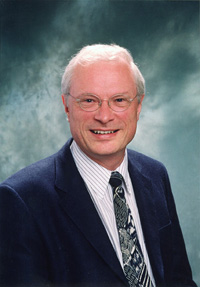
Professor James Calderhead joins Dundee as Vice Principal at a time of wide change and reassessment in higher education. He considers the implications of the White Paper.
Recent weeks have seen the publication of two significant documents for higher education. First was The Future of Higher Education, the English ‘White Paper’, which although applying purely to higher education in England will inevitably have consequences for universities in the rest of the UK. More recently, A Framework for Higher Education in Scotland was published by the Scottish Executive.
The first has been by far the more controversial, particularly in respect of its head-on approach to the resourcing of higher education by allowing institutions to raise tuition fees to £3,000 on condition that they are active in widening participation, and also in its vision of a more differentiated higher education system, with some universities becoming part of a research elite and others becoming focussed on teaching. Both, however, set an agenda for reform in higher education and point to the need for substantial change.
In considering teaching and learning, for example, both papers stress the importance of improving the quality of provision, as well as increasing its accessibility, flexibility and relevance to students and employers. The approach of the English White Paper, however, is through an assortment of carrots and sticks and higher levels of monitoring and accountability - such as additional funding for Centres of Excellence, a toughened external examiner system, and greater access to information on the quality of provision for intending students.
The Scottish approach is more to highlight the issues that currently face higher education but to leave universities individually and collectively with other stakeholders to address them in their own way.Particular issues that the Scottish Paper draws attention to include the changing demography of Scotland with fewer young people coming through to higher education; the low participation in higher education of those from families in partly-skilled or unskilled occupations; the need for part-time and flexible learning opportunities for those engaged in work or with other domestic or caring responsibilities; the opportunity for Scotland to play a larger role in attracting international students; and the need to maintain and improve quality in the face of scarce resources. Both papers also draw attention to the importance of collaboration - or even strategic alliances and merger, in the case of the White Paper - as a means of building on excellence, avoiding duplication, and developing efficiency.
Clearly no higher education institution can afford to be complacent in the face of an environment that is changing as rapidly as it is today, but Dundee is well-placed to meet many of the challenges ahead. Several faculties have already developed alternative routes into their degree programmes building on articulation agreements with colleges, and wider access and fast-tracking projects. There is developing expertise in new technologies in learning, and a growing amount of distance and flexible provision, bringing students from both home and overseas into contact with tutors in Dundee. The University offers a variety of learning support for students coming from non-traditional backgrounds or with particular language needs; and the developing partnership with St Andrews is also proving helpful in developing the procedures and infrastructure that support effective collaboration. Added to this, there is a range of distinctive features to the education and quality of life that Dundee has to offer. Undoubtedly, the task ahead is to build on these strengths and to ensure that Dundee becomes well-recognised internationally and known as a university of first choice for staff and students interested in the excitement of learning.